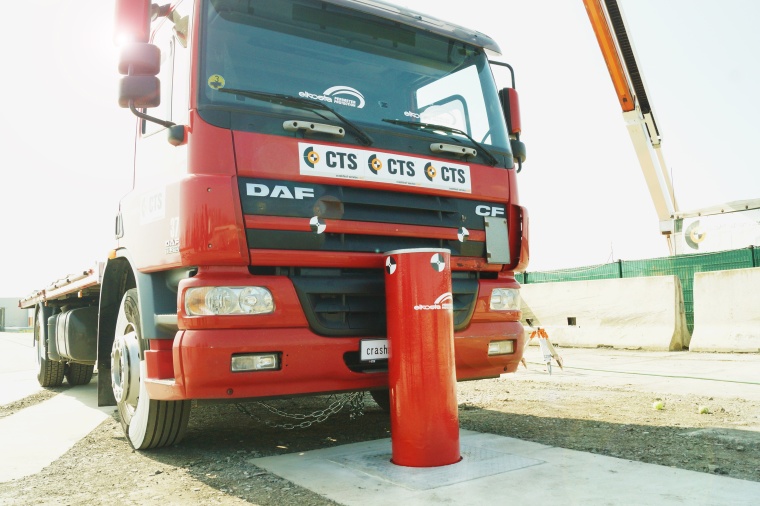The Validity of Bollard Crash-tests with Different Criteria
How useful is a bollard crash-test with 24t at 48 km/h compared to a crash test with 7.5t at 80 km/h? Can such test parameters and the associated results give a fair indication of ...

How useful is a bollard crash-test with 24t at 48 km/h compared to a crash test with 7.5t at 80 km/h? Can such test parameters and the associated results give a fair indication of the effectiveness of vehicle bollards? Specialists for High Security products with impact load, Thorsten Grunwald and Yvonne Kolatschek at Perimeter Protection Group (PPG) have their doubts.
Thorsten Grunwald: First of all – 24t at 48 km/h – these special parameters according to the new international standard IWA 14-1 do not correspond to the test parameters established on the market for years. Crash-tests should always be carried out with the most common, most widespread vehicle, since the probability or availability of such a vehicle being used for a potential terrorist attack is high
Yvonne Kolatschek confirms: Not without reason, the American Department of State, which had already published the first certification standard for the crash-testing of perimeter barriers and gates in 1985, specified the current, medium-weight truck as the sole test vehicle. During the years, other types of vehicle have been included within the gradually developed test standards ASTM F2656 and PAS 68. However, a test vehicle N3E with a test weight of 24 t per IWA 14-1 (see figure) is neither included in the American test standard ASTM F2656 nor in the British test standard PAS 68, which still represent the two most established representative test standards. A crash-test result is not only dependent on the impact-energy resulting from the mass of the test vehicle and the test-speed, but also on the test-vehicle`s type and its unladen mass as well as on the weight and type of attachment of the additional ballast to achieve the required total weight.
Yvonne Kolatschek adds: For an N3E test vehicle as per IWA 14-1 with a total weight of 24 t, the unladen weight must be at least 9750 kg. This means that the added mass can be up to 14250 kg. In comparison, the minimum permissible unladen weight of an N3C test vehicle with a total weight of 7.2 t is 6100 kg, so that a maximum mass of 1100 kg can be loaded – a much lower percentage of the total weight. In addition, a maximum of 100 kg of the additional ballast can be applied to the N3C test vehicle in unsecured form. N3E test vehicles can however be completely loaded with unsecured ballast to meet the test vehicle mass even though the ballast does not remain fixed to the test vehicle at the moment of impact. This does not guarantee its effectiveness.
Thorsten Grunwald: Many of the past crash-tests with bollards have shown that a 7.5 t test vehicle tends to take off at high speed on impact. In some cases, the bollards were completely ‘skipped’. A successful crash-test with 24 t at 48 km/h thus does not ensure that a crash-test with 7.5 t at 80 km/h would also be successful despite the slightly lower impact energy. An ultimate certainty that a bollard is capable of effectively stopping a 7.5 t truck at 80 km/h is only given by a successful crash-test carried out with appropriate parameters.













